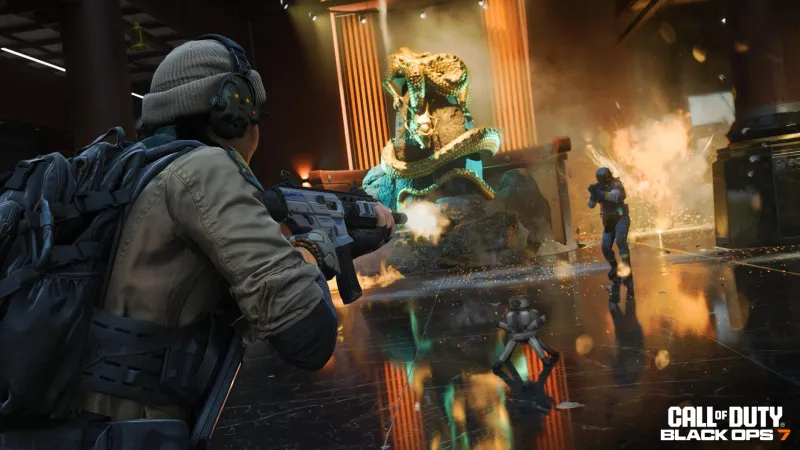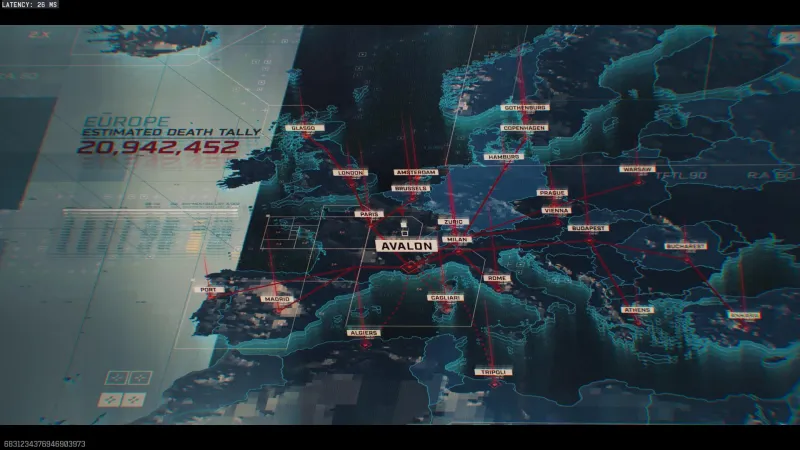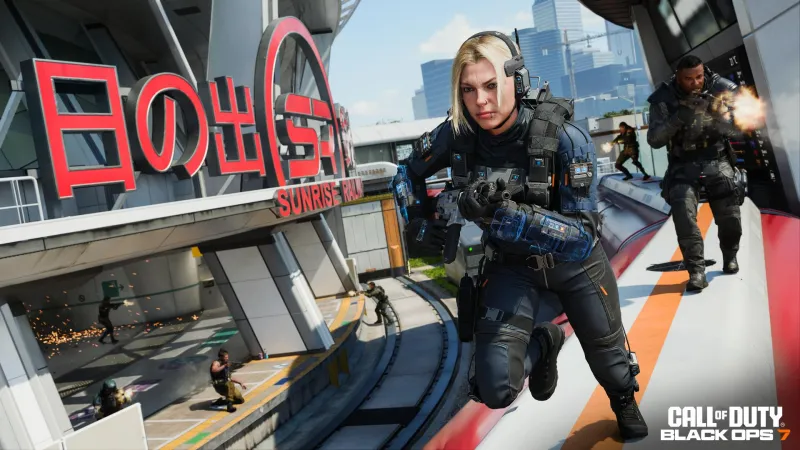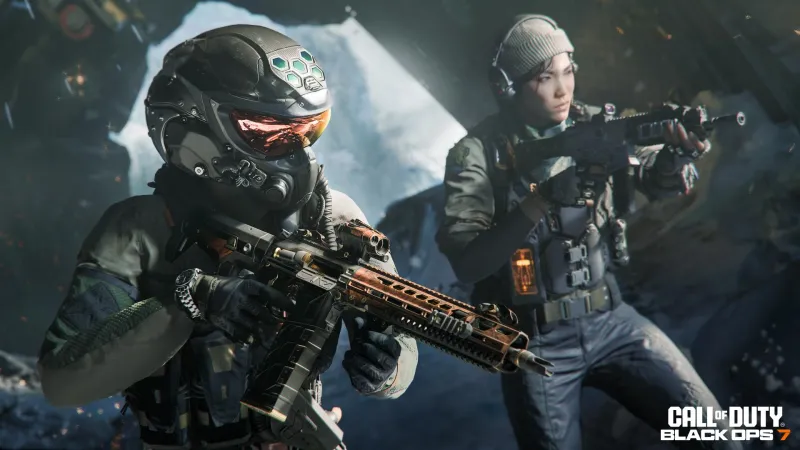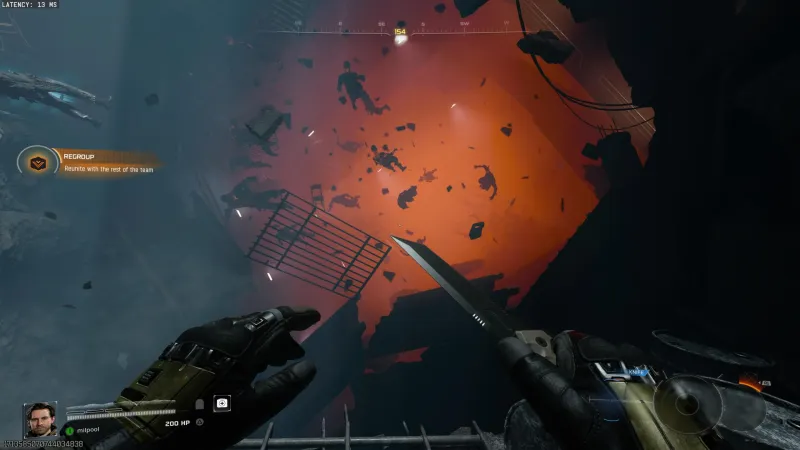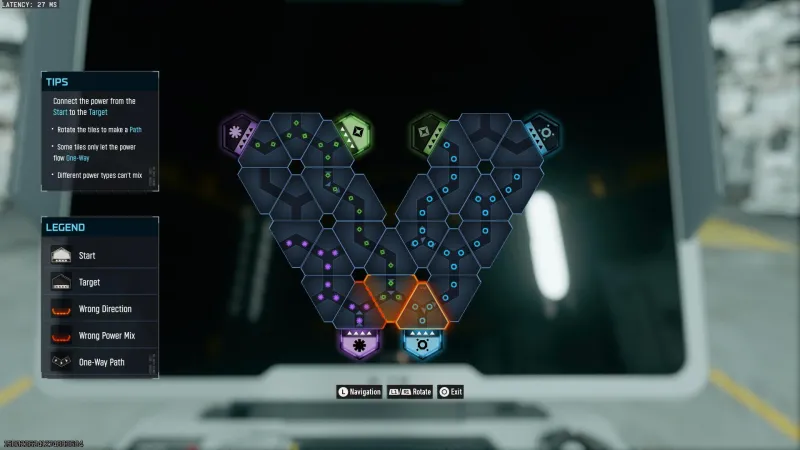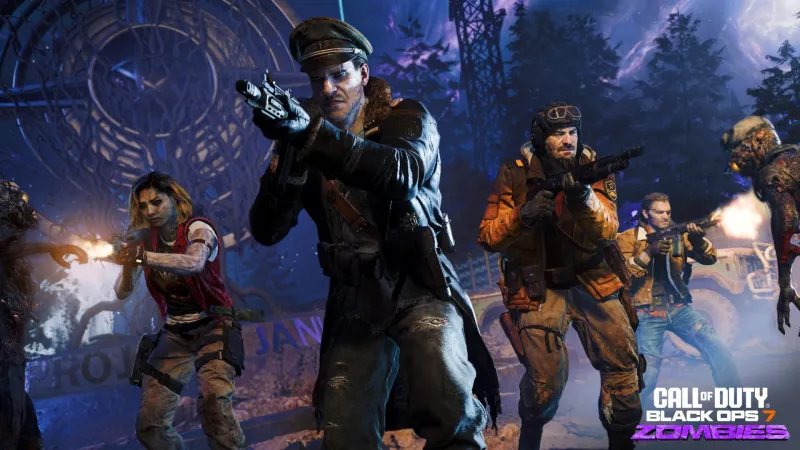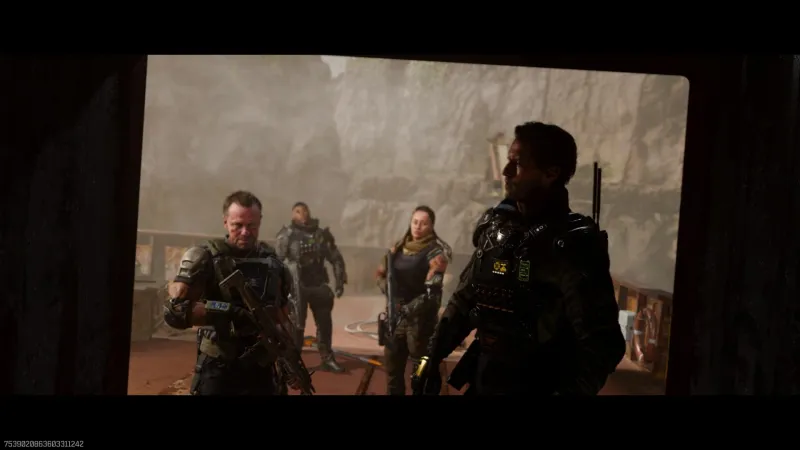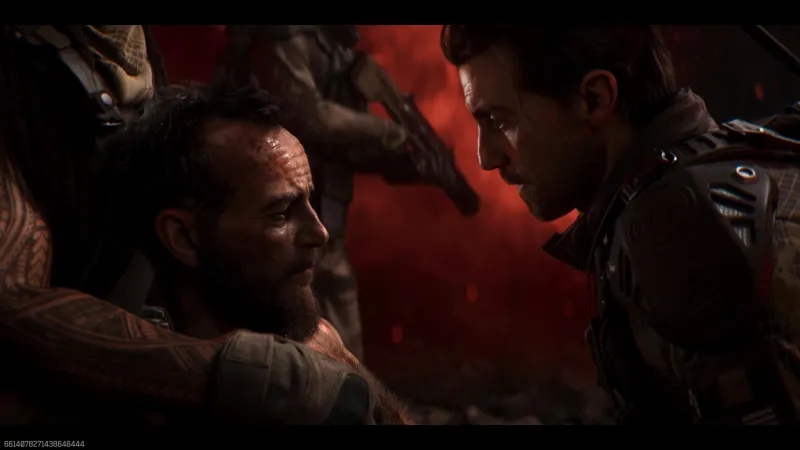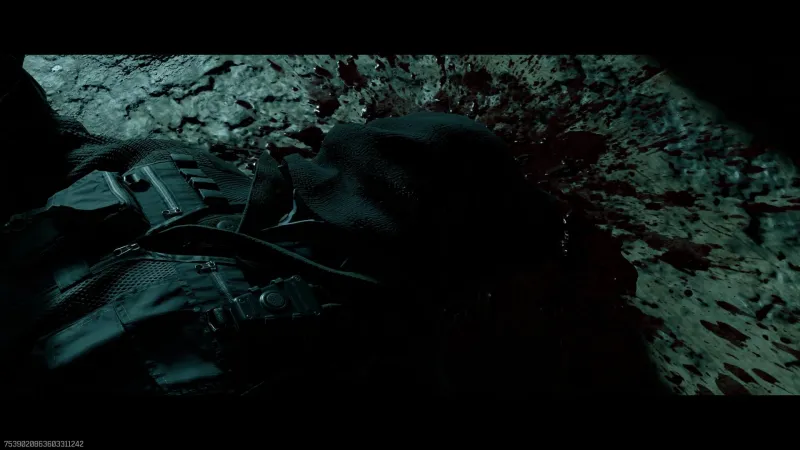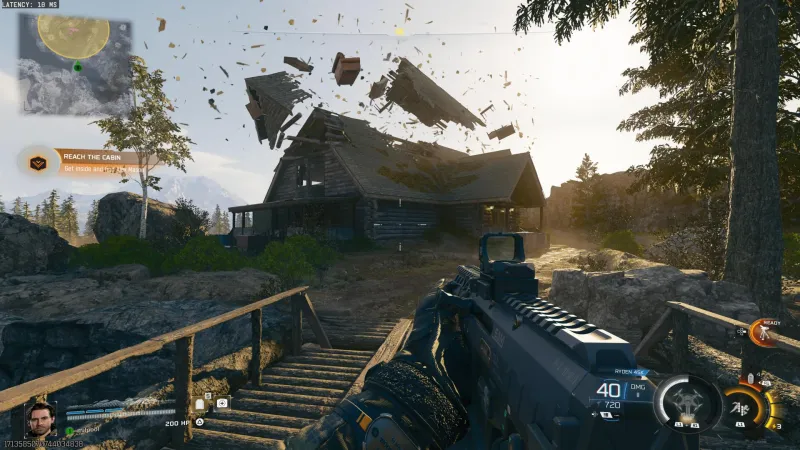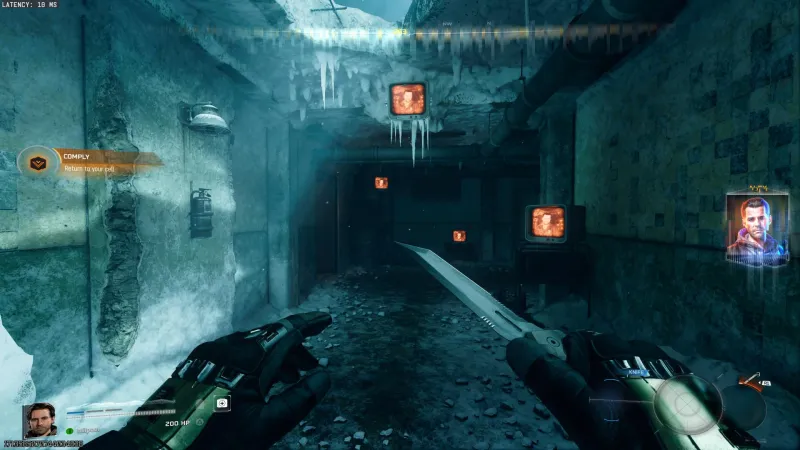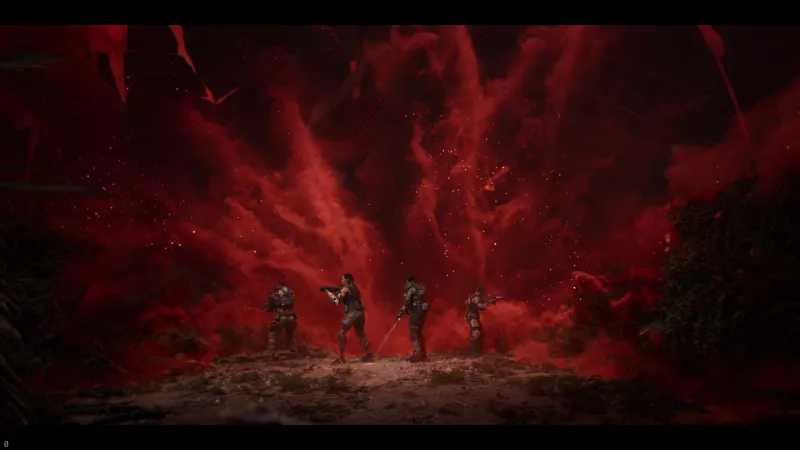Reading List
The most recent articles from a list of feeds I subscribe to.
Godfall Creators Reveal Supernatural Roguelite Shooter, Armatus
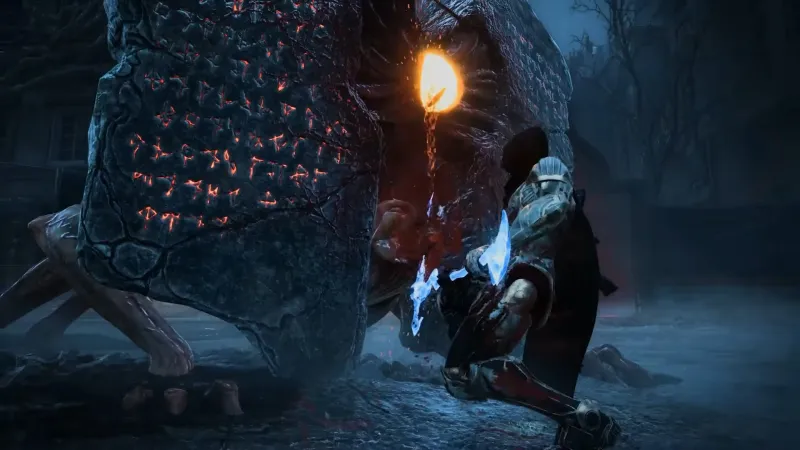
Today’s Xbox Partner Preview kicked off with the reveal of Armatus, a roguelite third-person shooter coming next year by Counterplay Games, the studio behind 2020's Godfall. The game takes place in Paris, which has become overrun with demons after the fall of humanity.
Players control a supernatural warrior hailing from an ancient order who wields traditional firearms and celestial powers, such as a glowing scythe-like weapon. You’ll battle your way through demons in search of a gateway to heaven called the Sunless Gate. A run-based game, death means restarting with different weapon loadouts, and players will gain new abilities the further they progress.
Armatus is coming in 2026 to PlayStation 5, Xbox Series X/S, and PC. It's also coming to Xbox Game Pass.
Dave The Diver Comes To Xbox Today, Next Expansion Arrives Early 2026

Dave the Diver puts you in the flippers of Dave, who by day is a deep-sea diver exploring the depths of the Blue Hole, retrieving treasure and catching sea life. Then, at night, he takes his haul to a nearby sushi restaurant, where they can use his treasures to upgrade the establishment and his catches to serve the patrons. The game has received various updates in its more than two years of post-launch support, including crossovers with Godzilla and the Like a Dragon franchise.
In addition to the surprise launch of Dave the Diver on Xbox Series X/S, we also got a new look at the upcoming In The Jungle expansion, which was previously slated for a late-2025 release. The expansion, which now arrives in early 2026, allows Dave to explore solid ground, ride through jungle settlements, and battle against animals like a crocodile.
Dave the Diver is available today on Xbox Series X/S, Xbox on PC, and Xbox Cloud. According to Xbox, the release is optimized for handheld devices. Meanwhile, In The Jungle hits all versions of Dave the Diver in early 2026.
Call of Duty: Black Ops 7 Review - Good Luck, Have Fun
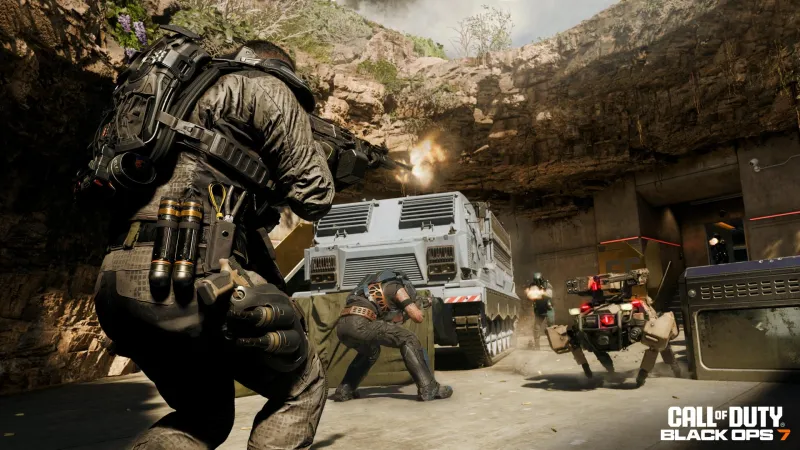
Reviewed on:
PlayStation 5
Platform:
PlayStation 5, Xbox Series X/S, PlayStation 4, Xbox One, PC
Publisher:
Activision
Developer:
Treyarch, Raven Software
Release:
Call of Duty: Black Ops 7 is about having fun – in the most hyperactive way possible. The 22nd installment of the Call of Duty series is a companion piece to last year’s Black Ops 6, and while it doesn’t reinvent the wheel, it kicks it right off its axis with a near five-hour story campaign that is Black Ops 2 meets the “new weird” genre, a larger round-based version of Zombies called Ashes Of The Damned, and a refined approach to multiplayer that is anchored by the best map selection of Call of Duty’s modern era. It’s relentless and absurd most of the time, but Black Ops 7 is an approachable action shooter designed for any playstyle that’s lobbed in its direction.
Whereas 2020’s Black Ops Cold War and last year’s Black Ops 6 pieced together shades of films like Night Moves, The American, and Tinker Tailor Soldier Spy, Treyarch and Raven Software have opted to trace their socio-political talking points with a psychological narrative that is noticeably more Kubrick than Reagan. Set in 2035, nearly a decade following the events of Black Ops II, Black Ops 7’s co-op story follows JSOC lead David “Section” Mason (Milo Ventimiglia) and his “Specter One” outfit as they investigate the return of Nicaraguan terrorist Raul Menendez and the deceased’s threats to burn the world down in three days. Their findings circle back to The Guild, a robotics tech corp led by CEO Emma Kagan (Kiernan Shipka), and the result is a hallucinogenic romp involving a psychochemical virus that forces the spec ops squadron to relive their nightmares.
Plot-wise, it misses the mark. There are paranormal messes, mind-altering set pieces that bleed Control and Alan Wake, and nods to Frank Woods, Alex Mason, and The Battle of Los Angeles, and it’s all funneled through a made-for-TV script that’s unsure about its target audience. It’s not a terrible approach for a campy co-op military shooter that adheres to the Call of Duty mantra of “rinse, plate, repeat,” but not when it’s trying to conceptualize its own spin on science fiction. It uses close-quarters combat to create intense moments but the campaign’s mission variety isn’t substantial as Mason and JSOC are either clearing out lab facilities or decrypting data drives.
With a darker tone that uses atmosphere as an evaluation of fear, Black Ops 7’s Zombies goes back to basics with curated experiences that refresh core mechanics instead of jeopardizing its identity. The latest iteration, Ashes Of The Damned, is Treyarch’s biggest round-based map to date and one that separates itself from Black Ops 6’s Terminus with an open-world layout that’s heavily inspired by TranZit from Black Ops II and encourages players to visit six new locations – including Janus Towers, Blackwater Lake, and Zarya Cosmodrome. The map is built around Ol’ Tessie – a new Wonder Vehicle and ‘70s junker pickup truck that’s upgradable, repairable, and under the guidance of TEDD himself – and as an honorary fifth member of the squadron, it’s used to navigate the mode’s main quest, which picks up right where Black Ops 6 concluded.
Players have the option to explore Ashes Of The Damned with Grigori Weaver and his team or the original Zombies crew and do so via three modes: Standard, Survival, and Cursed. The new Cursed mode offers a classic Zombies experience with no minimap, no loadout weapons, and a point system inspired by Black Ops III. The sole Survival map, Vandorn Farm, mimics Liberty Falls’ replayability with a playground full of wall-buys, Perk-a-Cola, Gobblegum dispensers, and a robust expansion to Black Ops 6’s Augment system that features over 60 new upgrades.
That level of detail is why Black Ops 7 multiplayer is in a league of its own. Call of Duty fatigue has become a persistent mood in the last few years, but despite the re-sequels, the Beavis and Butt-Head adverts, and whatever Modern Warfare III (2023) was, Black Ops 7 isn’t just another rerun. It’s not due to the open matchmaking playlists and persistent lobbies, nor the exponential indifference to Gunsmith and the franchise fetishizing attachments. It’s because Black Ops 7 has the most promising collection of 6v6 launch maps since 2018’s Call of Duty: Black Ops 4.
There is an argument that can be made about Black Ops Cold War, but Treyarch’s latest map pool offers reimaginings of the Black Ops 2 classics Raid, Hijacked, and Express, as well as 13 larger original locations that are designed with community feedback in mind. Cortex and Scar blend simplicity with elevated sight lines and flanking routes; Blackheart and Flagship turn active offshore worksites into “bang-outs” that reward ingenuity; and Den, a medium-sized map set in a Japanese feudal castle-turned tech domain, is just a mid connector away from being an S-Tier addition to Treyarch’s portfolio. There are a few duds, like Exposure and Retrieval, but they still prominently emphasize visibility over manual doors, oriel windows, and broken glass ASMR.
Even with full-auto shotguns being a part of the 30 weapons at launch, Black Ops 7 circumvents fatigue by incorporating a new 6v6 objective mode (“Overload”) inspired by Uplink and Capture The Flag, and a revived arsenal of guns and gadgets that are a little more near-future and a little less ‘90s. Assault rifles like the M15 and Peacekeeper MK1 offer versatility at multiple distances, while SMGs such as the Dravec 45 thrive in close quarters, despite the need for a buff to add balance.
They seem a bit unfair, but Treyarch’s new “Overclock” system adds powerful enhancements to equipment. Each item is retrofitted with two Overclock levels, which can add a faster charge rate to Trophy Systems or ensure that Decoy Grenades only play footstep audio. They’re not game-breaking, but they do add a wrinkle to weekly challenges and Black Ops 7’s Weapon Prestige, which returns for the first time since 2018 with unique Prestige Camos and Attachments, and a new Weapon Prestige Master tier that features retro camos like Bacon and Weaponized 115.
Treyarch’s Omnimovement system from Black Ops 6 also returns, but it thankfully swaps Tactical Sprint for new movement tech in the form of a wall jump, which is primarily used on maps to peek cover before rushing a site or advancing a position. Gunfights still play out like Call of Duty, but the added customization adds an interesting level of unpredictability that hasn’t been present since the inclusion of specialists in Black Ops III. Add in Treyarch’s nerf to Rotational Aim Assist, which includes a requirement for a player’s right stick movement to be tracking an enemy target for the aim assist to activate at full strength, and it’s clear there’s a new learning curve to apply.
Despite its shortcomings and the campaign’s lack of variety, Black Ops 7 is a solid entry solely for establishing new ways to play while making Call of Duty the social space it used to be. Treyarch and Activision’s commitment to additional modes continues to cannibalize their storyboards, and while it remains to be seen if their open stance on skill-based matchmaking (SBMM) is merely a PR tactic, they’re still capable of producing absorbing multiplayer and Zombies experiences that improve with every round. Black Ops 7 may not be the sequel some wanted this year, but in the most BO4 way possible, it emulates individualism to set a new bar that’s worth surpassing.
Score: 7.5
Yuji Horii's Journey To Making Dragon Quest, As Told By The Man Himself

With Dragon Quest VII Reimagined gracing the cover of Game Informer, and it being the first time a Dragon Quest game has ever done that, I spoke to series creator Yuji Horii for 90 minutes to write a retrospective that subscribers can read here. Humbly, it's a (very good) deep dive into the creation of Dragon Quest, the development of its many sequels, how Horii feels about the franchise today, including the upcoming Reimagined remake, and so much more – if you aren't subscribed yet, you can do so here.
While I plan to keep the bulk of the information learned from this interview in that retrospective, I want to break out some aspects of it, starting with Horii's journey to making the first Dragon Quest. Enjoy!
How Yuji Horii Created Dragon Quest
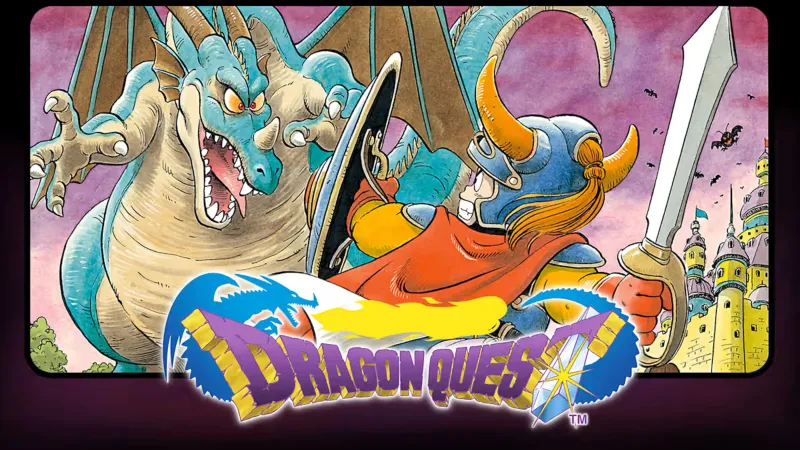
Horii began his career as a magazine writer, including his own column in Weekly Shōnen Jump, a popular manga publication. He saved up his money and, by age 27, had enough to purchase a computer. It was with this computer that he began "dabbling in game development," he tells me. Around that time in his life, Enix Corp, as it was called before merging with Final Fantasy maker Square to create Square Enix in 2003, hosted a game development contest – Horii won an award in it, "and that's actually the beginning of my career as a developer," he says.
On this personal computer, Horii played a game called Ultima 1: The First Age of Darkness, a primitive RPG by today's standards but one that, when viewed, can be seen as a clear inspiration for RPGs like Dragon Quest, Final Fantasy, and more. "That really inspired me," Horii says. He remembers thinking, "If I make a game like this, it'll surely become a hit." Unlike Ultima, which was a PC game, he wanted to create something like it (or like Wizardry, another game he mentions as inspirational) for the Famicom, with its 64-kilobyte limits. Specifically, he wanted to use Ultima's 2D dungeon system (versus Wizardry's 3D approach) and combine it with Wizardry's "character growth" (which we now call RPG elements today) to create something new for this new Nintendo console.
"Within that limitation [of the Famicom], I wanted to make something that would resonate with people," he says. "[...] I was really fascinated by the interactive nature of computer games. I wanted to create a game that was really story-focused, or had a heavy story element, because that would surely be an interesting product."
That product Horii had in mind would become Dragon Quest, and he quickly got to work, drawing maps, cities, and even the world's citizens on paper before fleshing out the main scenario in his head. However, this initial foundation and his computer prowess could only get him so far – to turn Dragon Quest into a real game, he needed two more people.
The Dragon Quest Trio
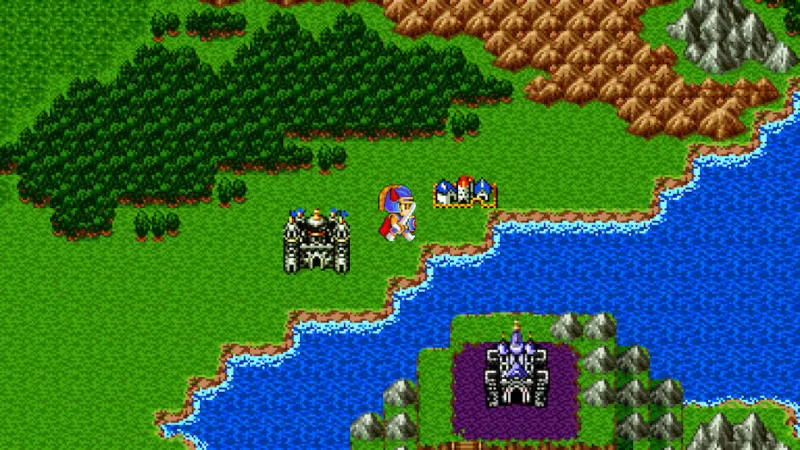
Horii recalls how the person who would become the lead character and monster designer of the Dragon Quest series became involved.
"[There] was a staff member [at Weekly Shōnen Jump] named Torishima-san, who was also the assigned editor of someone named Akira Toriyama," Horii says, adding that Torishima told him this Toriyama person wanted to work on a video game. Familiar with Toriyama's art, Horii reached out to him and the rest is history.
Though you might associate Akira Toriyama as the visionary creator of Dragon Ball and Dragon Ball Z, Toriyama is the man responsible for the visual style of Dragon Quest. Sure, his excellent on-paper art didn't translate precisely into the 8-bit visuals of Dragon Quest – how could it? – but it created the vibes (and some amazing box art, too), and those vibes run like blood through the series, even today, more than a year after Toriyama's untimely death.
Just as crucial to the Dragon Quest puzzle as Horii and Toriyama is Koichi Sugiyama, who, prior to Dragon Quest, was already renowned outside of games for his work in movies, TV, anime, and other fields.
Back in the '80s, Square released a Shogi (Japanese chess) game and afterward, it sent out a survey postcard to everyone who purchased the game. Sugiyama responded to it, saying he was an enthusiastic player. People throughout Square took notice – "Isn't this guy a famous composer?" Horii remembers thinking. Horii and the team used the opportunity to speak to Sugiyama and get him involved in Dragon Quest, and again, the rest is history. Unfortunately, Sugiyama died in 2021 at the age of 90, but like Toriyama's art, his music defined a critical aspect of Dragon Quest, and I imagine it will continue to do so long after his death.
The First Quest
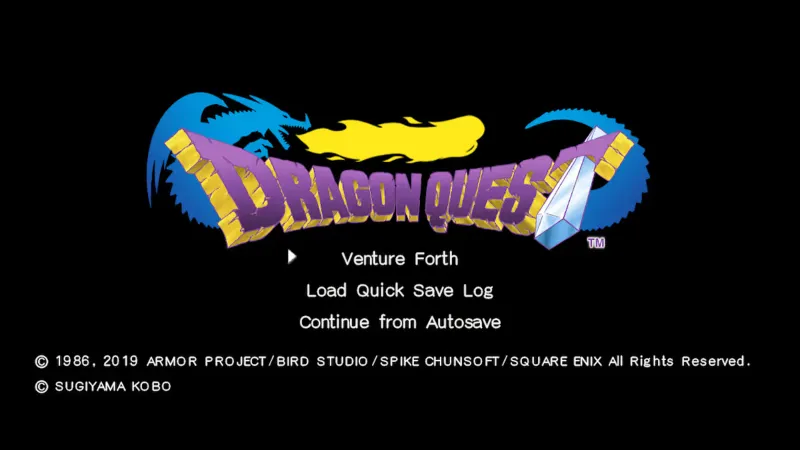
Dragon Quest launched on the Famicom in Japan on May 27, 1986, and it hit the Nintendo Entertainment System in North America three years later in 1989...except with a new title: Dragon Warrior.
“Way back then, when it originally released outside of Japan, we weren’t able to use the name Dragon Quest; we had to do Dragon Warrior,” Horii says. If you look at the U.S. box art for Dragon Warrior, you’ll notice it features box art different from the Japanese release, too; noticeably, without Toriyama’s art.
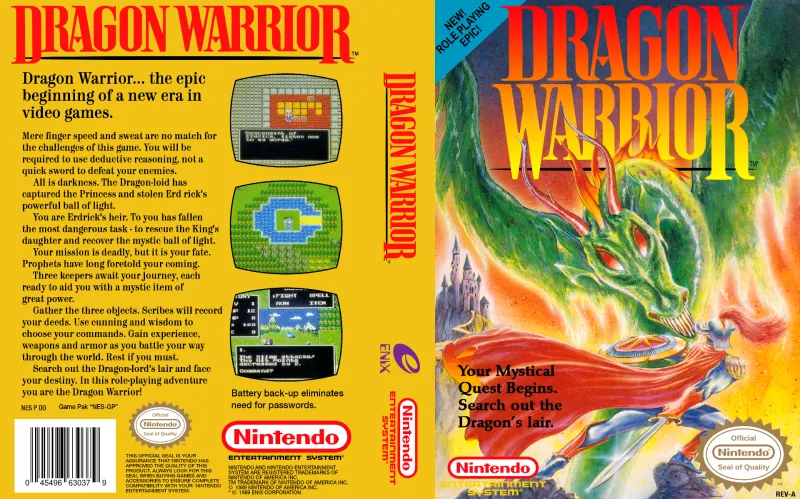
Dragon Quest is arguably the quintessential JRPG, a term some Japanese developers have balked at, but one Horii gladly accepts. It is a 2D fantasy game with a protagonist named Hero who must save the world by defeating monsters and evil in turn-based combat. “I’m just really happy to see everyone feel that way and have this sentiment toward the Dragon Quest series as a whole,” Horii tells me when asked about Dragon Quest’s place in the halls of RPG greats. “Attaching that story element to an RPG was considered a fresh perspective at the time, and I think that’s what really made Dragon Quest stand out from other game titles.”
Dragon Quest, the first official Japanese version, has sold 1.5 million copies, according to this sourced Fandom chart, with Dragon Warrior selling roughly half a million copies.
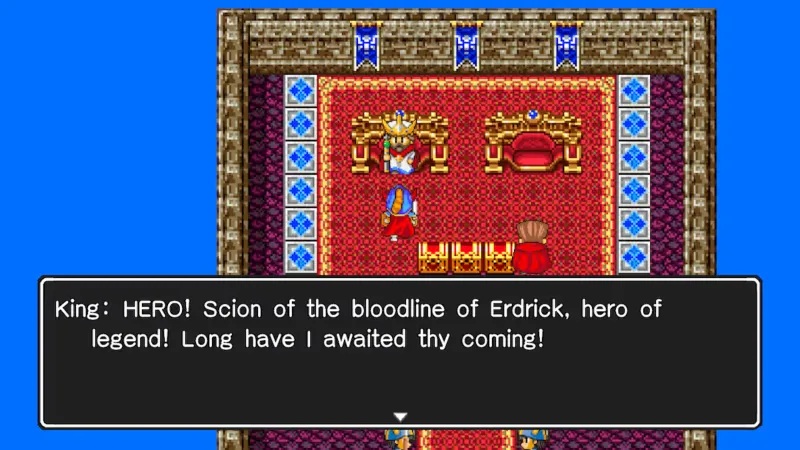
With Dragon Quest's success, the team officially got to work on its first-ever sequel, Dragon Quest II: Luminaries of the Legendary Line, though Horii tells me he was already working on it before that greenlight; in fact, the team was busy making DQII before the first game even launched, "so I guess yeah, we were pretty confident."
I spoke to Horii about DQII and the rest of the series' sequels, but to read about his thoughts on those games, you'll need to check out my full Dragon Quest retrospective here.
Dragon Quest VII Reimagined launches on February 5 on PlayStation 5, Xbox Series X/S, Switch 2, Switch, and PC.
While waiting for its launch, check out this article breaking down everything in the Dragon Quest VII Reimagined issue of Game Informer, and be sure to subscribe here if you haven't yet to access the Dragon Quest VII Reimagined cover story, our deep dive into Dragon Quest history with creator Yuji Horii, and so much more. Here are some other stories to check out:
- Dragon Quest VII Reimagined Will Have A New Never-Before-Seen Conclusion
- Who Is Takeshi Ichikawa, The Producer Of Dragon Quest VII Reimagined?
- Here's How The Dragon Quest VII Reimagined Team Streamlined Its Main Scenario
- How The New Voice Over Affected Dragon Quest VII Reimagined
- Breaking Down The Party Members Of Dragon Quest VII Reimagined
- Yuji Horii On Making Dragon Quest Games: 'I Do Think I Will Work On It Until I Die'
Tales Of Berseria Remastered Is Coming In February
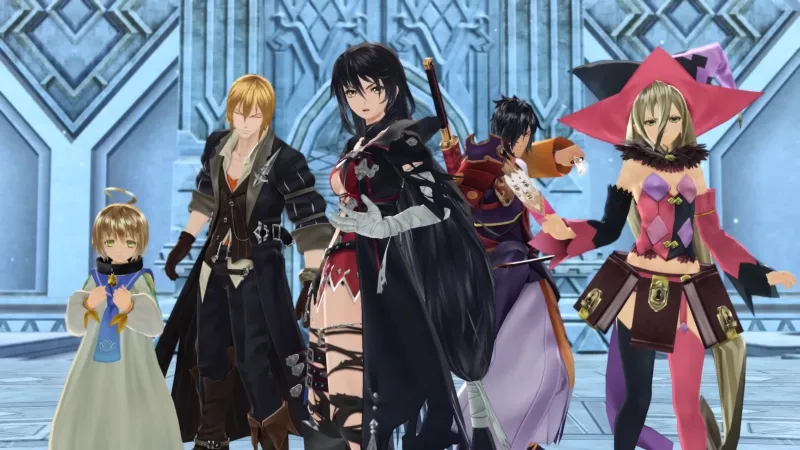
2017’s Tales of Berseria is the next Tales Of entry to get the remastered treatment, as Bandai Namco has announced an improved version of the game is heading to consoles and PC next year.
Tales of Berseria Remastered arrives on February 27. The plot follows protagonist Velvet Crowe, who seeks to avenge her brother's murder alongside a crew of sea-faring pirates. The remaster's quality-of-life improvements include the ability to toggle encounters, destination icons, and earlier access to the Grade Shop. The game also includes all of its released DLC packs. Check it out in action in the trailer below.
In our review of the original Tales of Berseria, former Game Informer editor Kimberly Wallace scored the game a 7.5 out of 10, writing that "Tales of Berseria does some interesting things, and is the most captivating Tales storyline in some time. I like the majority of its ideas, but the execution often feels half-realized. It still feels like the franchise isn't making big enough leaps, and is just content to bring its fans more of the same. By now, you probably know if you're okay with that. Nothing ever made me stop playing, but the flaws are impossible to ignore. "
Berseria is the latest of Bandai Namco’s ongoing Tales of Series - Remastered Project, its renewed initiative to release improved versions of older Tales games for modern consoles as part of the franchise’s 30th anniversary. Thus far, it has released two remasters in 2025 with January’s Tales of Graces f Remastered and October’s Tales of Xillia Remastered.
Tales of Berseria Remastered will be available on PlayStation 5, Xbox Series X/S, Switch, and PC.
